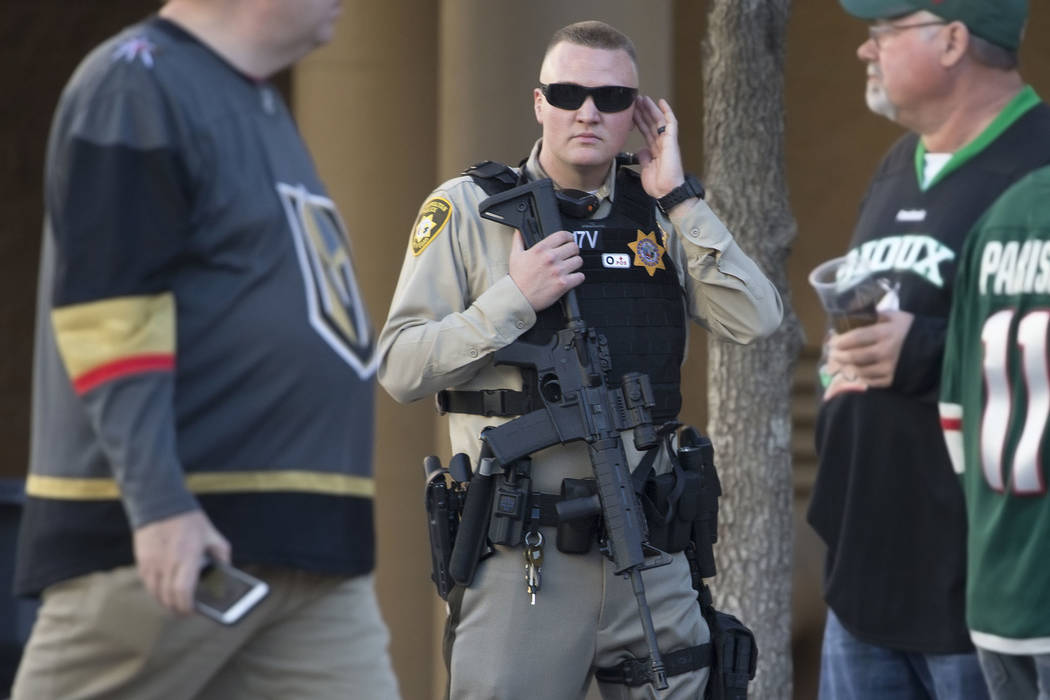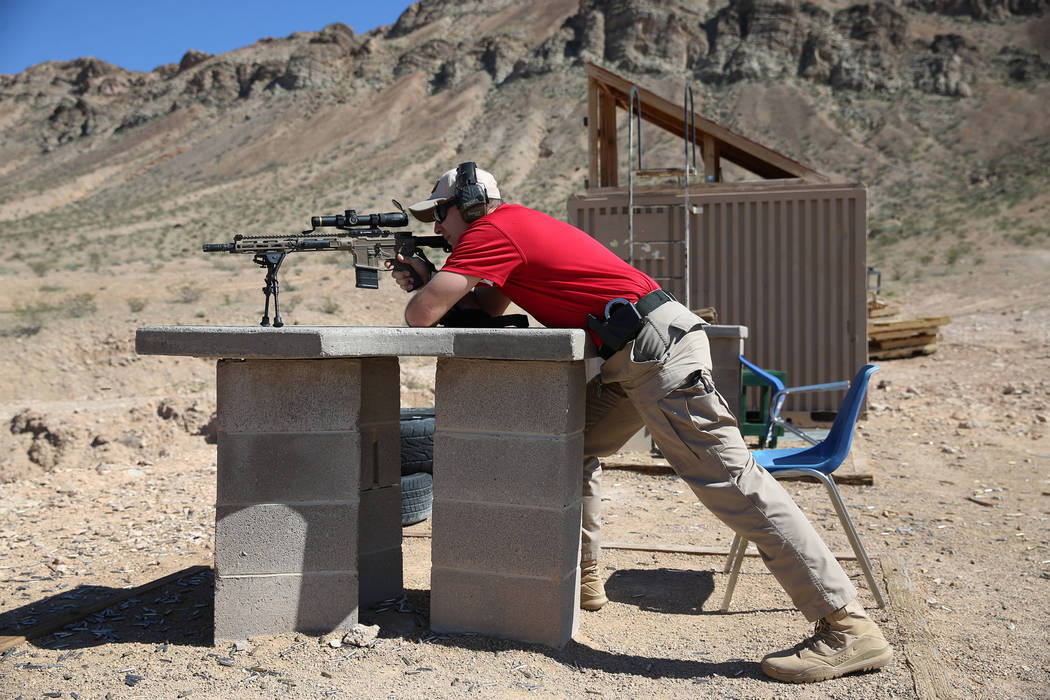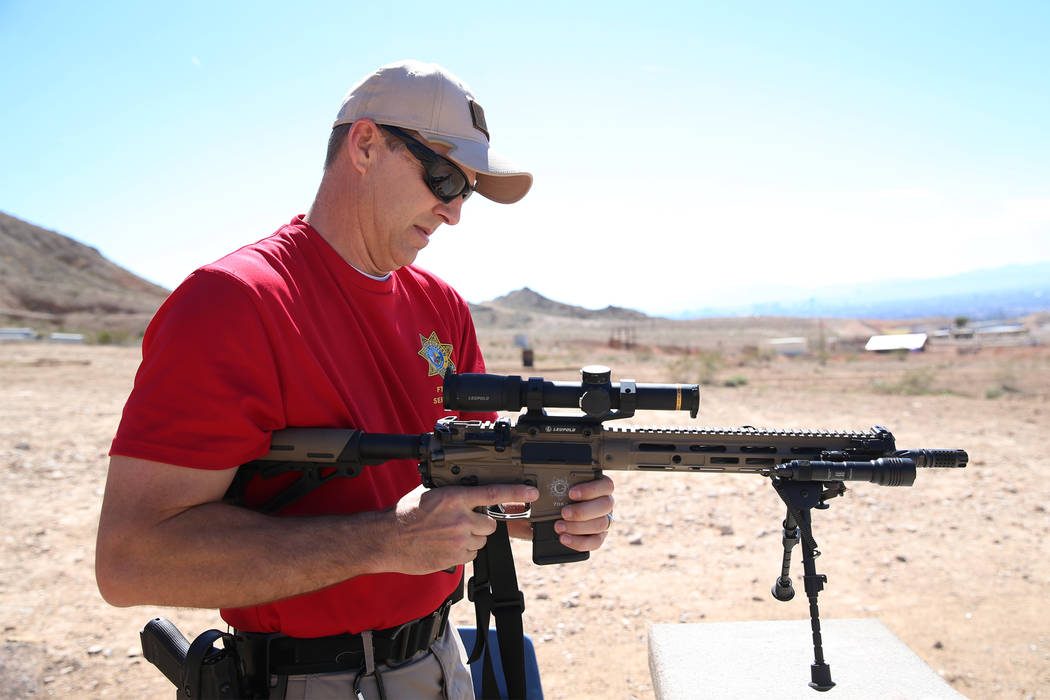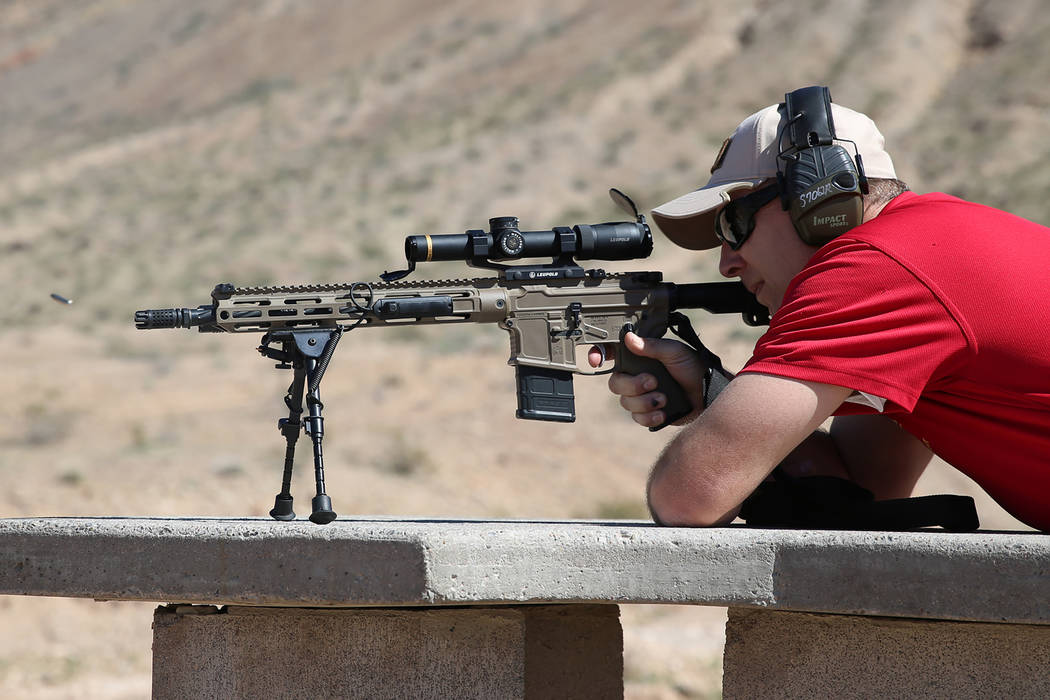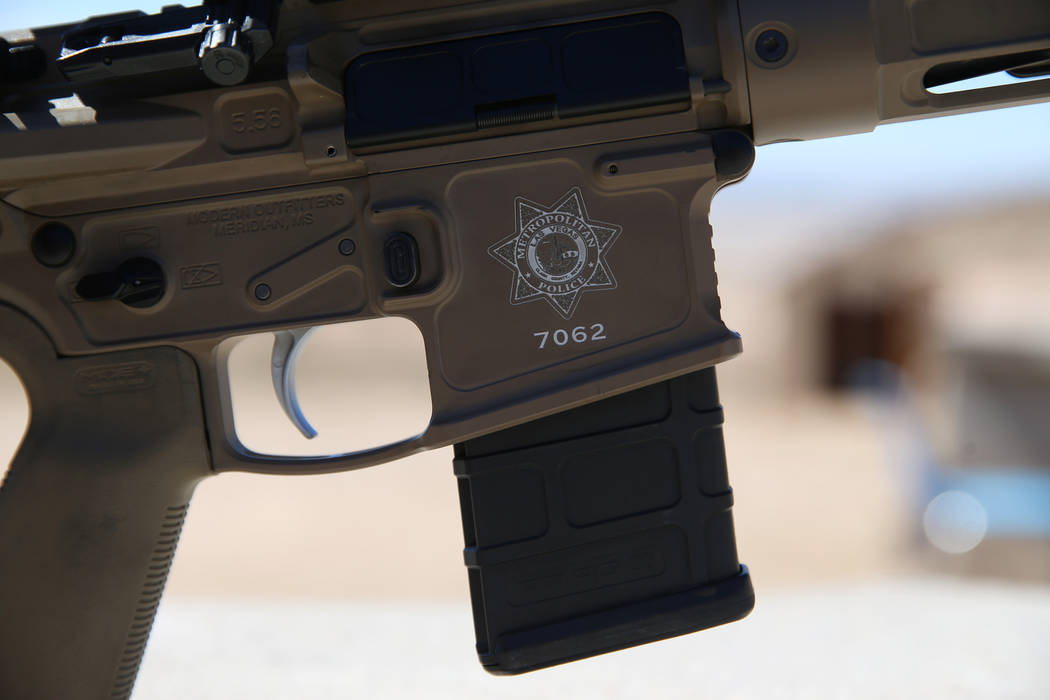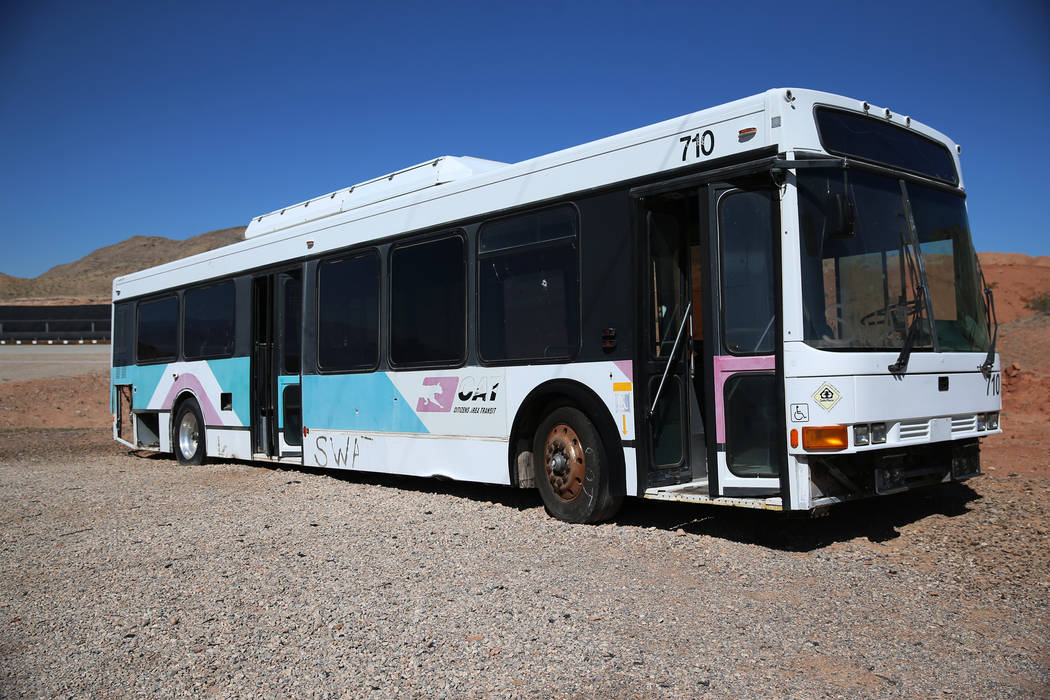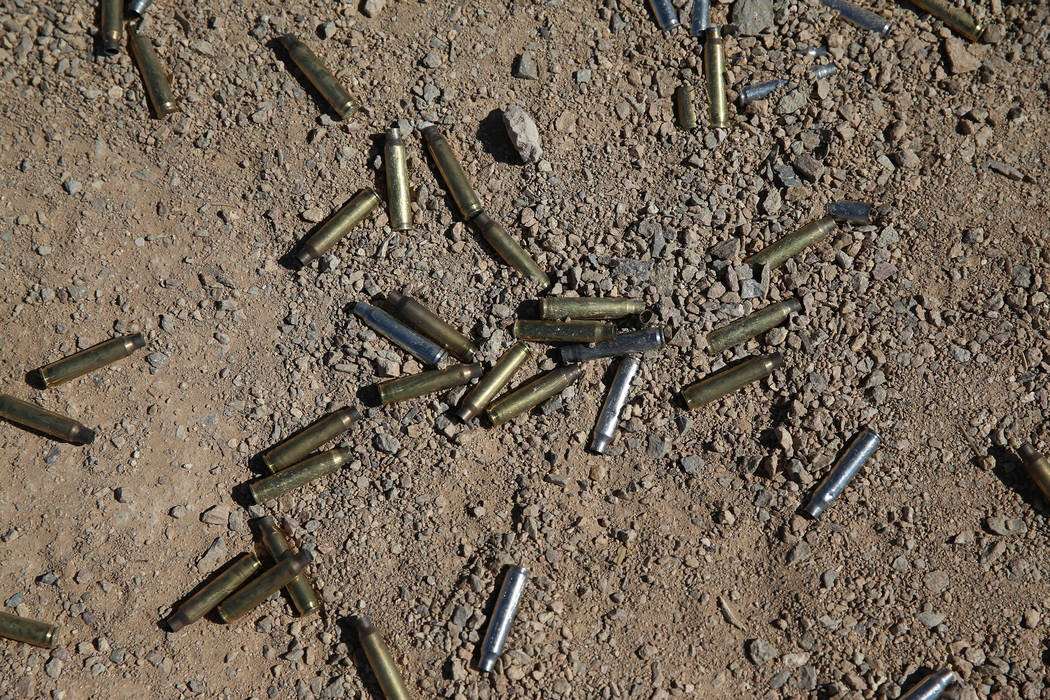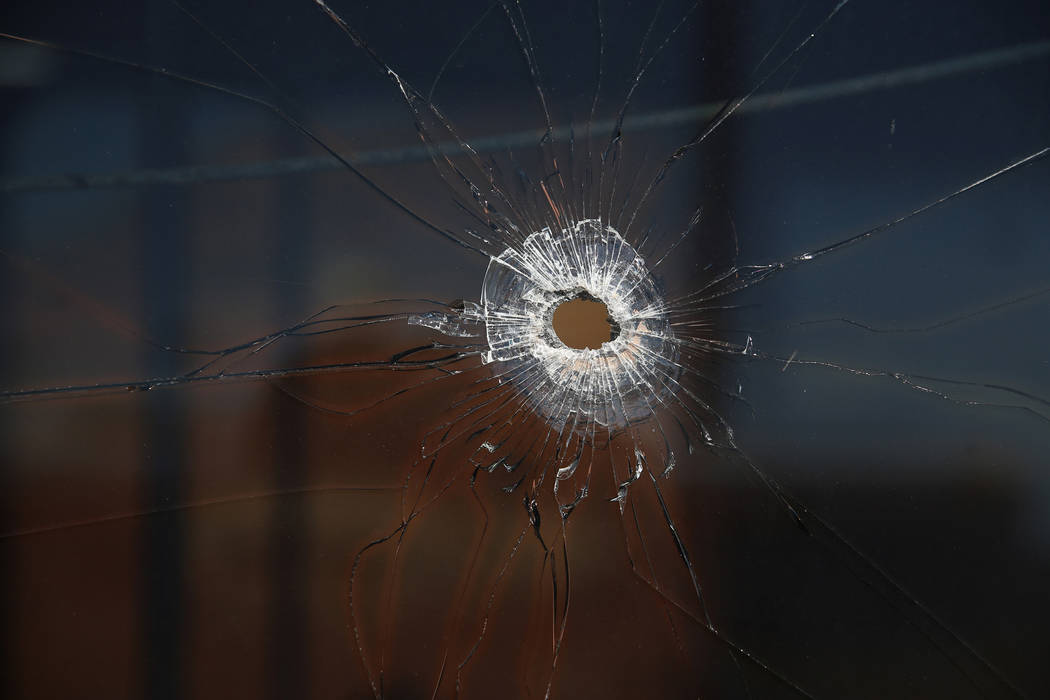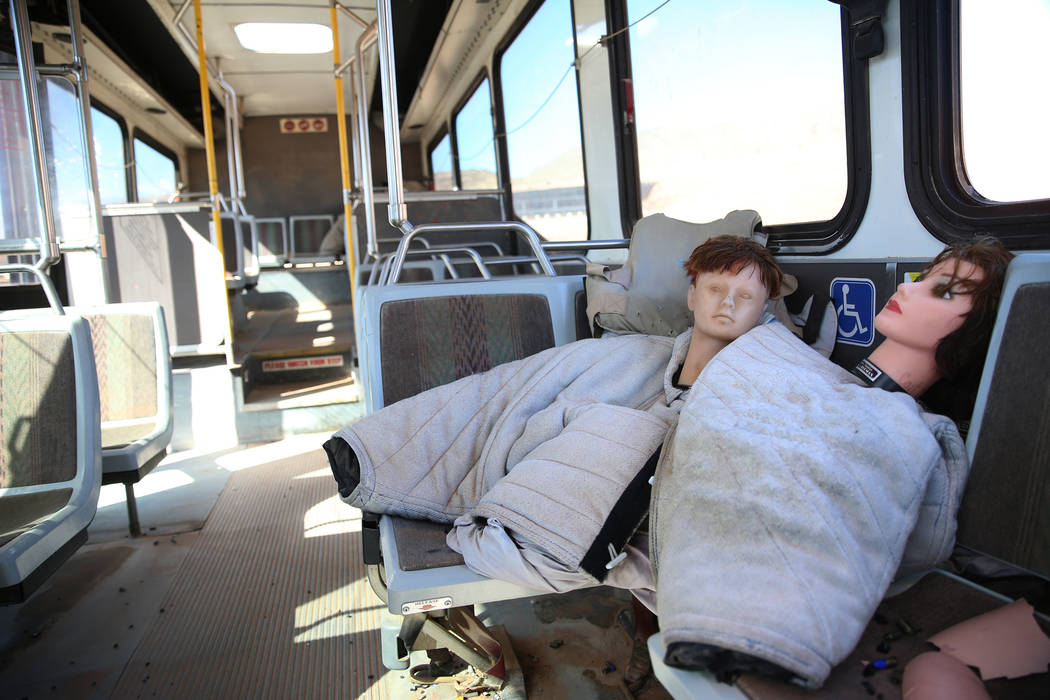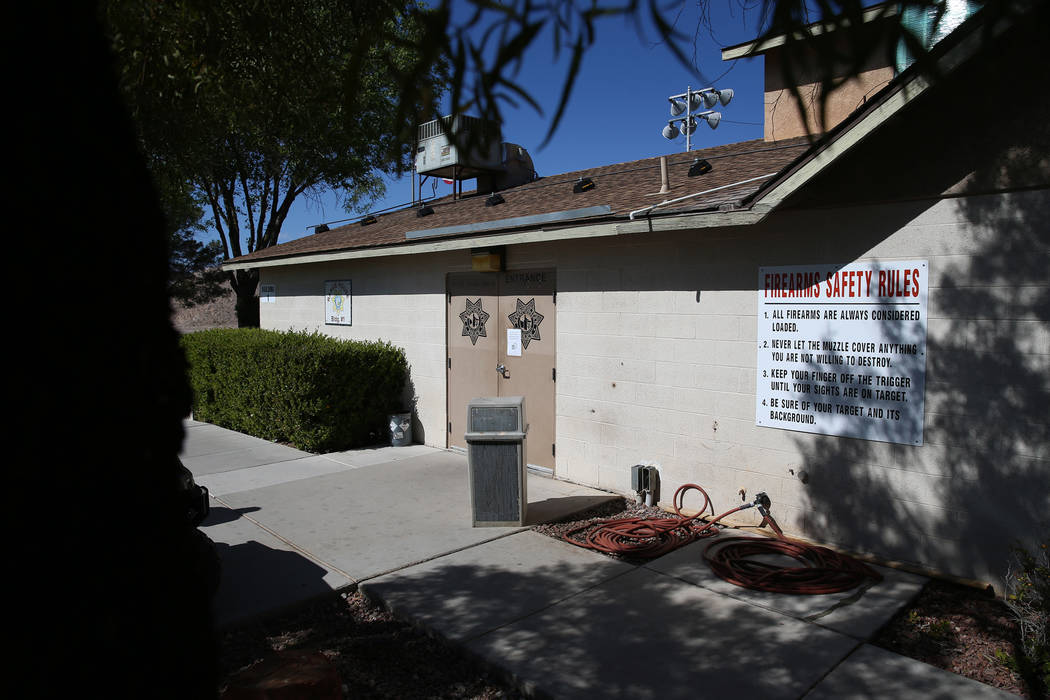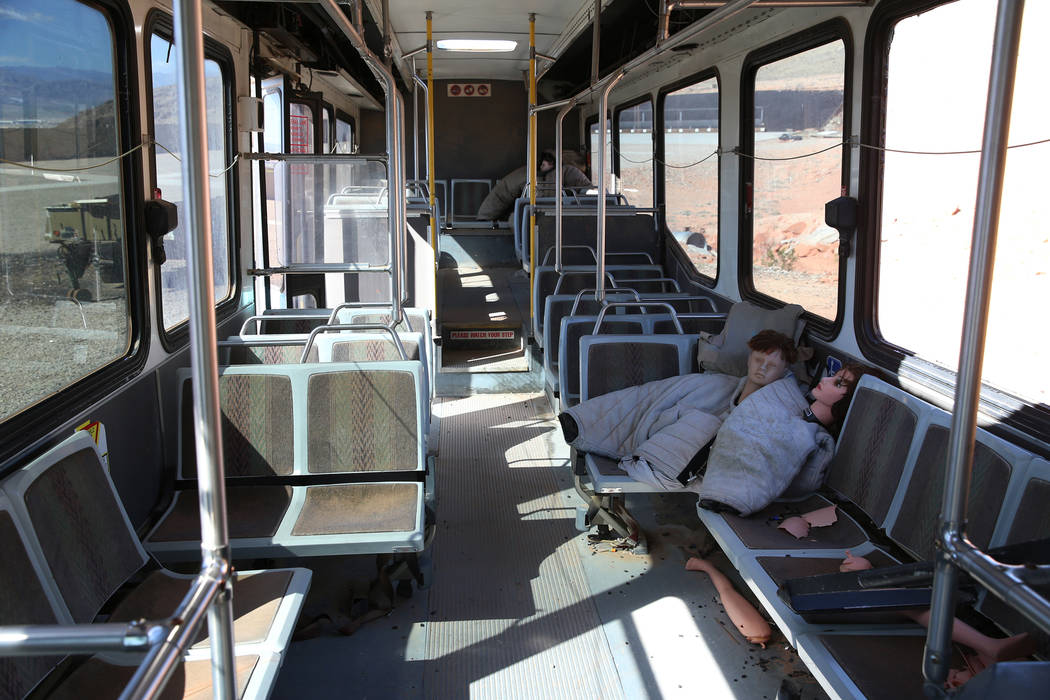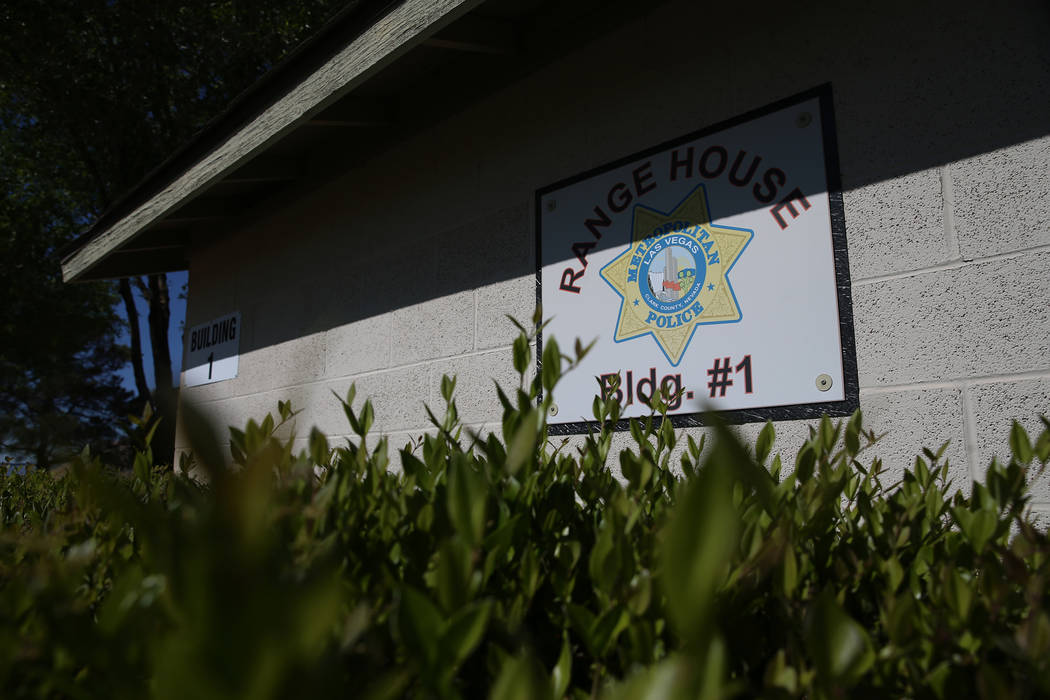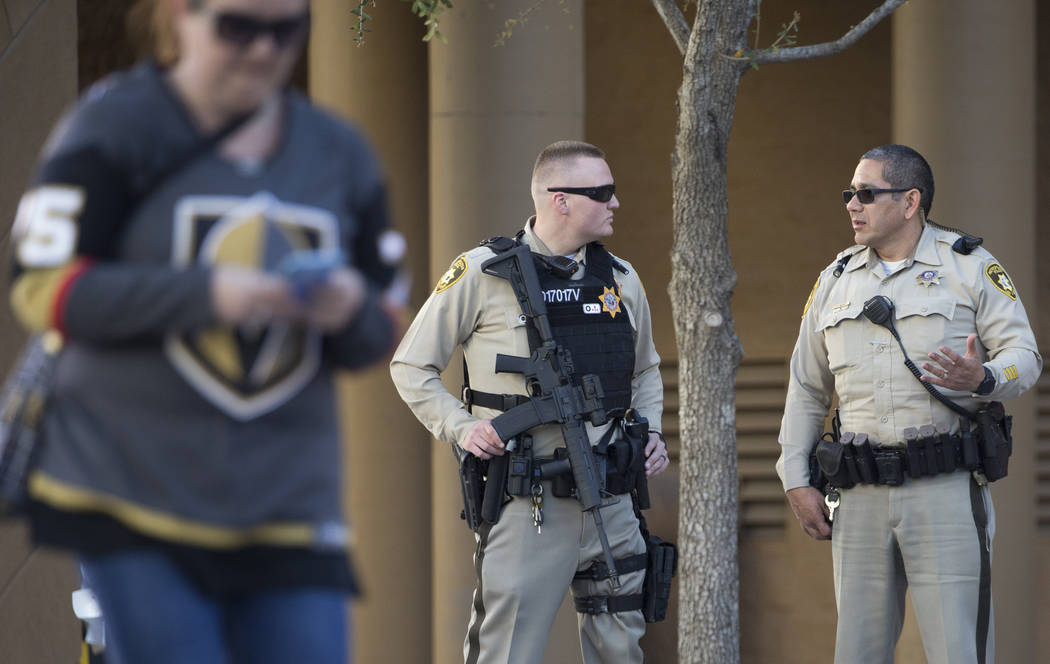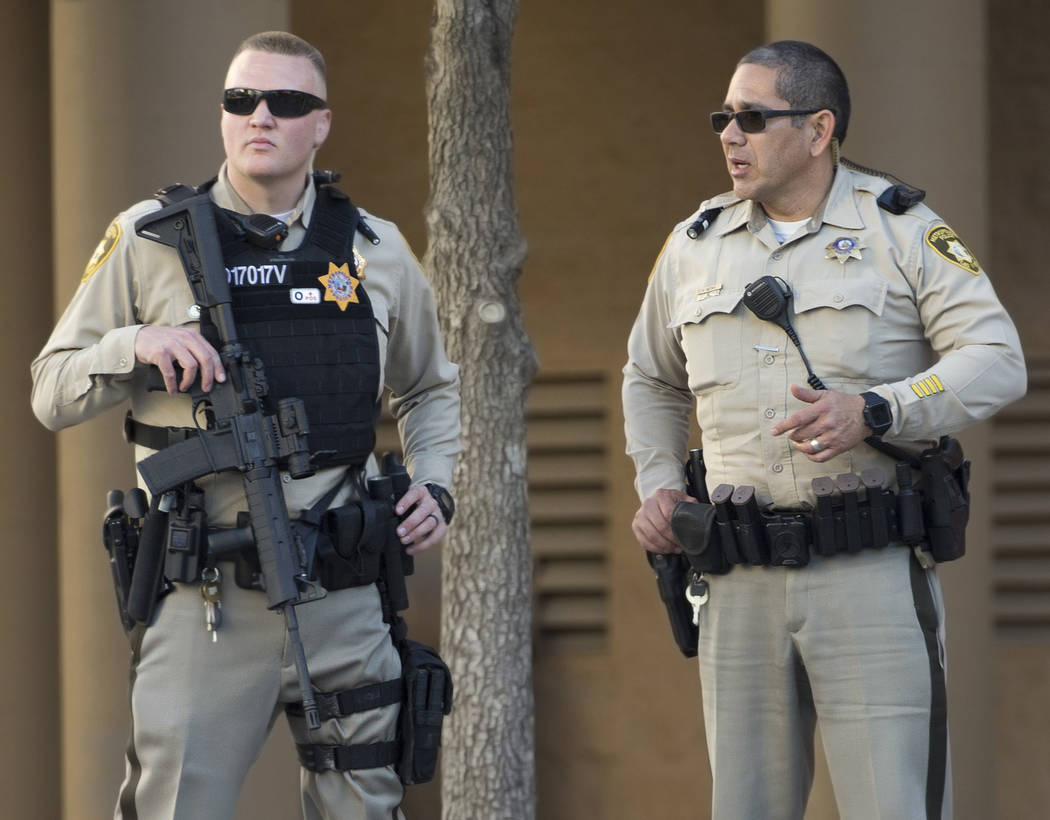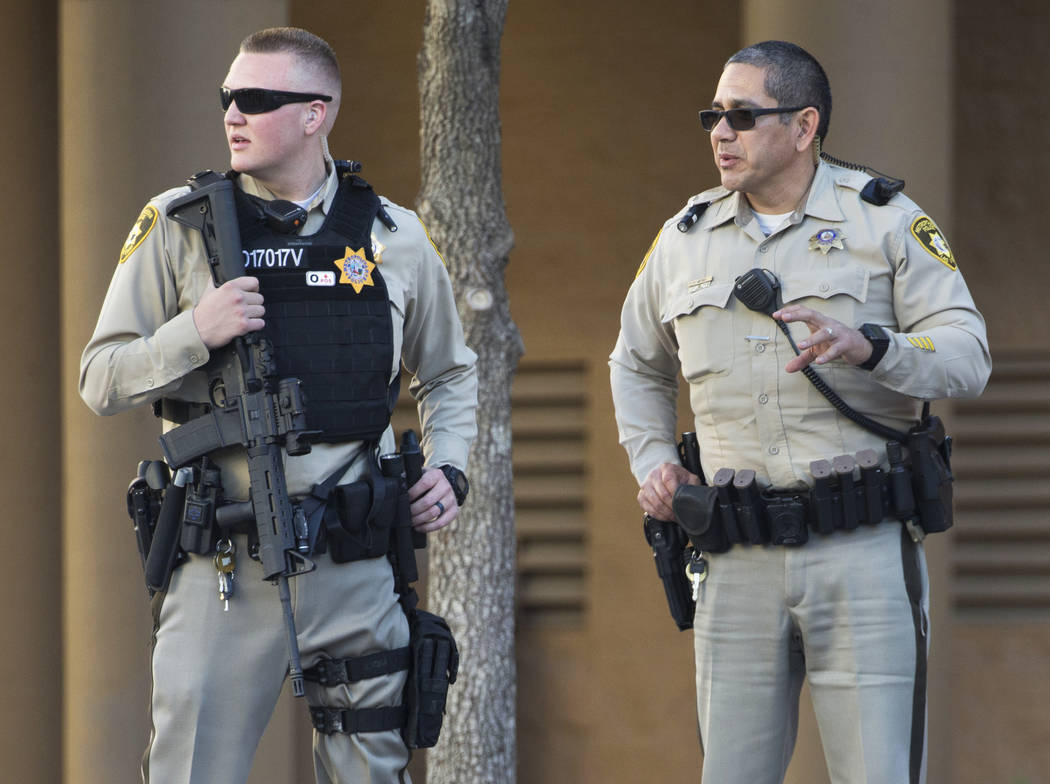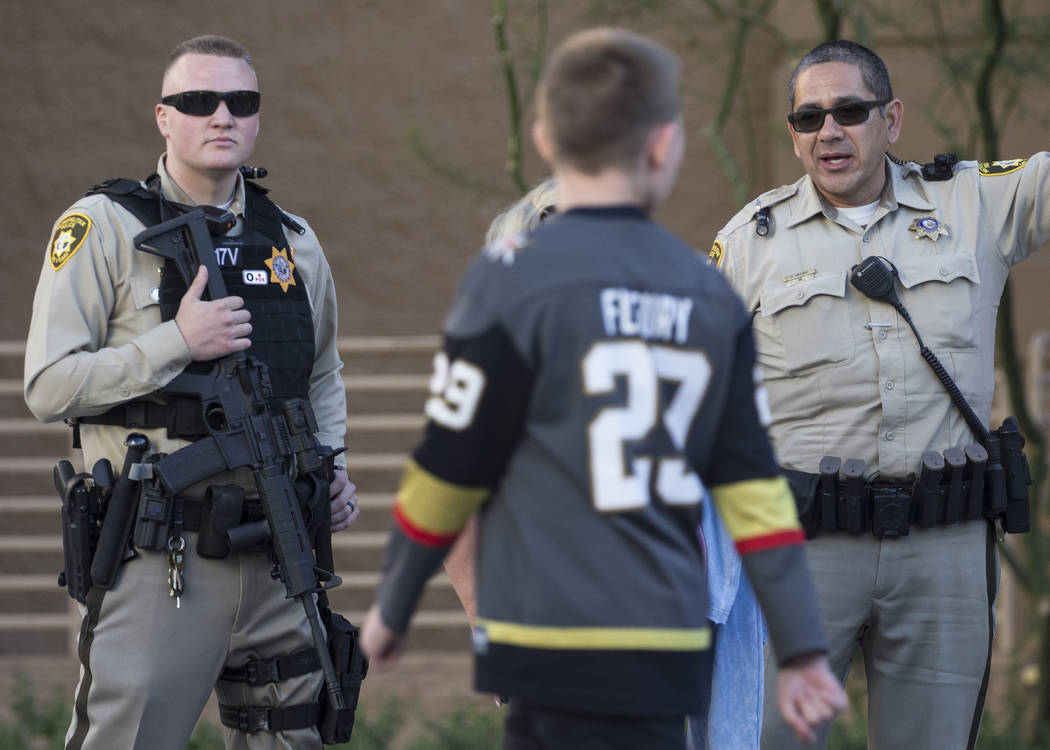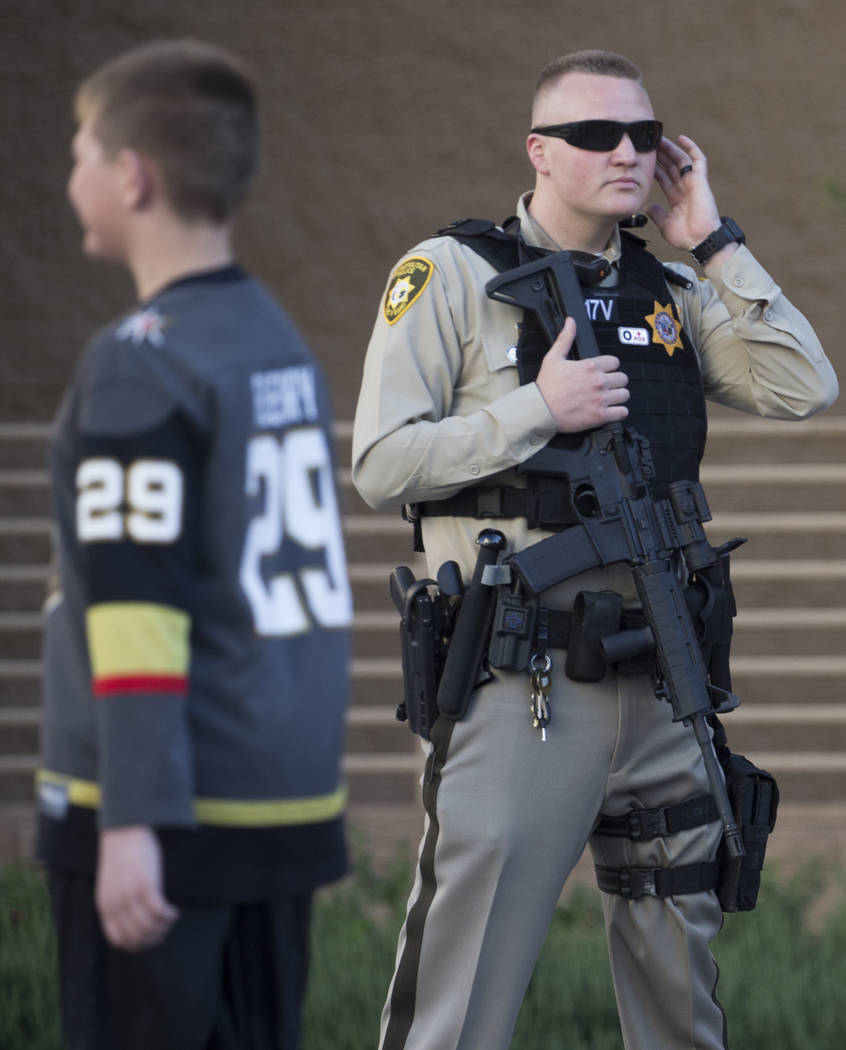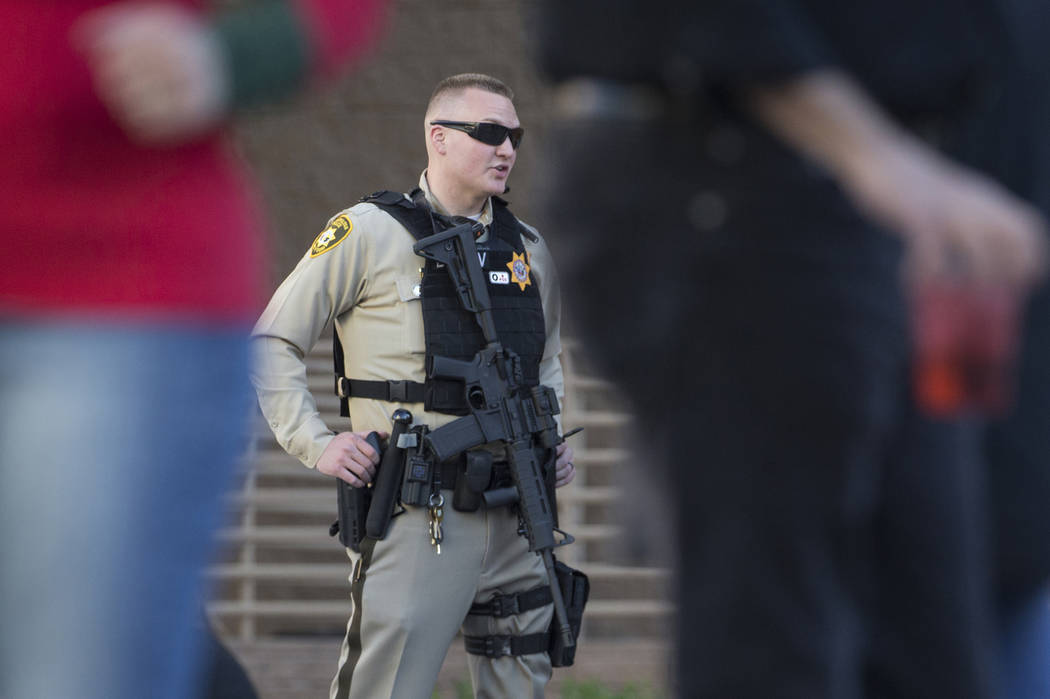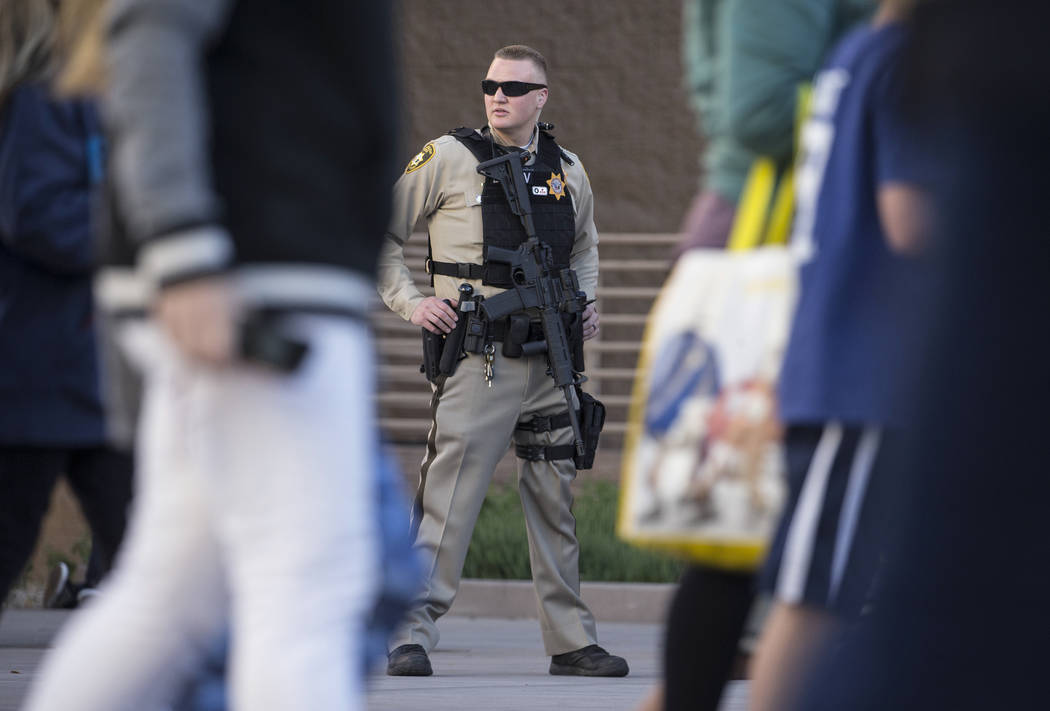Police rifle program applies lessons from Las Vegas shooting
Las Vegas police have implemented a new, specialized rifle program that trains qualified patrol officers to take aim and fire at elevated targets.
The program is only available to those who have been rifle-certified for at least two years, and the first version was launched in the months leading up to the Route 91 Harvest festival shooting. But after many officers covering the Oct. 1, 2017, festival found themselves unable to take on the killer during the attack, Metropolitan Police Department firearms trainers implemented a new curriculum from scratch.
“Before it was just, ‘Hey, we’ll do some elevated shooting and some distance shooting.’ Things they don’t normally get,” said Sgt. Shawn Romprey, who heads the department’s firearms training unit. “Well, after Oct. 1, we revised that program to, ‘We need more elevated shooting. We need more distance shooting. This happened, and we need to be ready for it.’”
Romprey said the new program includes a “re-creation shot,” modeled after the shot an officer would have needed to take to hit the gunman from the festival grounds.
Police have said the shooter was firing from within his 32nd-floor suite at Mandalay Bay, a few steps back from two broken windows. Without a fast way for officers on the ground to determine where the gunfire was coming from and situate themselves to take a direct shot, experts doubt the new program would have made much of a difference during the 10-minute attack.
But it stands to increase the effectiveness of everyday officers caught in complicated and quickly escalating police calls, said Wade Carpenter, who oversees patrol tactics, firearms and explosives with the International Association of Chiefs of Police.
“I think it’s forward-thinking and proactive,” Carpenter said. “This is not like before Columbine, when we were surrounding, waiting and sending SWAT in. Now, the response is immediate action from patrol officers. They’re the ones who are really on the front lines.”
The new program was modified in response to one of many shared concerns that officers voiced in interviews with department officials after the attack. Details of those interviews appeared in records that were recently released to the Las Vegas Review-Journal. Other concerns included:
—Insufficient rifle training for patrol officers.
—Insufficient range time for patrol officers.
—Insufficient protective equipment available to patrol officers.
Even officers who had rifles and protective equipment couldn’t use them, according to the records. That’s because, in accordance with department policy, they were stored in patrol vehicles parked outside the concert venue, rendering them inaccessible at the height of gunfire.
Metro since has updated that policy, allowing officers to keep the weapons on hand. That means citizens can now expect to see officers carrying rifles over their shoulders at Golden Knights games and other special events.
Officers also asked to carry more tourniquets and questioned whether they should be wearing bright yellow, reflective vests at special events. The vests are meant to make officers more easily recognizable in a crowd, but during the attack, some quickly tore them off, feeling like targets.
Extended range hours
The new specialty program is a step up from a rifle program that already is available for Las Vegas patrol officers.
On paper, officers can sign up for the entry-level program as soon as they finish field training. It requires more than 50 hours of initial training and a 90 percent qualifying score, police said. Officers are required to recertify every quarter.
But in practice, some officers found it difficult to get into the entry-level program, according to the newly released records.
One of those officers, Monty Fetherston, told detectives in his post-attack interview that he felt adequately trained to handle the incident but “wanted to be able to carry a rifle.”
“He has been unable however to get into the rifle class as it is always full,” a detective wrote. “He has tried several times to get in the class.”
Another officer, Christopher Del Villar, said the department “should offer more rifle classes as they are typically difficult to get into at the present time.”
A third officer, Megan Kraut, also noted that “training days have been taken away from squads” and “range time has been decreased.”
In response to those concerns, police extended range hours from five to six days a week, opening the door for more rifle-training sessions, Romprey told the Review-Journal.
Before the mass shooting, Metro was training about 100 officers a year on rifles, Romprey said. Last year, the department trained more than 300 officers, and this year the agency is on track to train another 400.
More than 300 officers are still on a waiting list.
“We’re trying to get through them as fast as we can,” Romprey said. “But we’re trying to make sure that we have the checks and balances in place, too, to make sure that we’re putting rifles in the hands of officers who have good decision-making skills and are responsible and not immature.”
New program
The specialty rifle program allows patrol officers who graduate to carry a scope, enabling them to take out targets at farther distances or elevated positions.
A patrol officer using a scope is not the same as a sniper, a job only available to SWAT officers. But the scope gives qualified officers in the field more range, Metro spokesman Jay Rivera said.
“It’s not a new unit,” Rivera said. “This is an ability, a skill, a certification.”
Romprey said that at the time of the shooting, 40 patrol officers had been certified through the initial version of the specialty program. More than 120 officers are now qualified to carry a scope and take out elevated targets.
The “re-creation shot” in the modified program is situated on a mountaintop at Metro’s firing range in the east valley. Romprey said it makes for a good lesson, however bittersweet.
“After you take that shot — and every one of us who took that shot hit it on the first try — it was disappointment,” he said. “For the simple thought that the people out there that night didn’t have the training that they needed, because we hadn’t had it before. The thought that, could we have slowed down what he did?”
The specialty program is highly selective, Romprey said. An officer who has been rifle-certified for more than two years isn’t guaranteed a spot. The department also considers supervisor recommendations, military experience and dedication.
For instance, Romprey said an officer who routinely practices at the range instead of just showing up to recertify every few months would get preference.
Charles Joe Key, a firearms training and ballistics expert, liked the description of the program but cautioned that it wouldn’t serve as a catch-all solution for an attack like Route 91.
“If you have a high-ground advantage, that allows you a much broader potential to pick targets,” Key said. “If you have somebody on the ground dealing with it, and they can’t fix the location from which the firing is coming, I don’t care if you have a bazooka — it’s not going to help.”
Key also warned that it is easy for scopes to slip out of alignment. Even a small bump in the road on the way to a crime scene can throw it off, which can result in shots that are off the mark by several feet if officers don’t catch the problem and correct it before firing.
“I am not concerned about police officers having scoped rifles as long as they meet all of the qualifications and as long as the rifles are protected,” Key said. “So if he or she goes to pull that rifle out — and goes to make that one, incapacitating shot — that the rifle itself hasn’t been impacted where the shot isn’t going where it should be going.”
Officers on the ground that night also asked for sniper units to work special events similar to Route 91 in the future. The department did not comment on those concerns, but Las Vegas police have assigned snipers to work the annual New Year’s Eve festivities on the Strip since at least 2017.
Snipers also were assigned to work the Life is Beautiful music festival last year in downtown Las Vegas.
Rifles within reach
While both rifle programs are designed to increase the amount of rifle-trained officers in the field, many officers interviewed after the mass shooting also raised concerns about a department policy that required rifles to be stored in patrol vehicles.
Sgt. Monique Bulmer, who was stationed within the festival footprint that night, told detectives the department’s rifle-deployment policy needed to change.
“Rifles are very important and Sergeant Bulmer feels the department has taken an ‘anti-rifle stance,’” a detective wrote.
Bulmer also believed that if rifles couldn’t be carried, they should be placed in a central location for special events.
“That way they can be accessed quickly should the need arise,” the detective continued. Several others shared similar thoughts.
Since the shooting, Las Vegas police have updated the department’s rifle policy, Lt. Kendall Bell told the Review-Journal in an emailed statement.
“Essentially, rifle-certified officers are now allowed to carry a rifle on their person making them readily available,” wrote Bell, who heads special events.
Carpenter, with the International Association of Chiefs of Police, said policies like that are becoming the norm, noting that it can be reassuring to see officers who are “ready” and have “the ability to protect these large venues.”
In the same vein, many officers also asked for more readily available protective equipment like vests, shields and helmets designed to stop high-velocity rounds.
The department declined to comment on whether any changes had been made regarding the availability of rifle-grade equipment for patrol officers. But Kenneth Sanders, a police tactics expert with more than 30 years of experience, said the important word is “available.”
Vests with rifle-grade plates are heavy, Sanders said — similar to the bottom of a thick skillet. So are rifle-grade shields and helmets, making them impractical for everyday calls.
“I don’t think they’re asking for everyone to have one,” he said. “They’re just asking for them to be available.”
He said many departments store similar equipment in supervisor cars or in a centralized command post during special events.
Officer Michael Maloney, who was working Route 91, recommended having additional equipment, such as shields or extra ammunition, in mobile command posts.
“Access to the MCP would be helpful as well, as the MCP was locked,” a detective wrote in summarizing Maloney’s interview.
Tourniquets and vests
During the attack, officers in the festival grounds quickly found themselves surrounded by wounded concertgoers. Fifty eight people died, and more than 800 were wounded.
Medical staff at the site were limited, so most officers applied tourniquets alone. But they quickly ran out of supplies, records show, eventually using shirts, belts and even bedsheets from the medical tent to stop the bleeding.
Detective Glenn Brook, who worked the festival, suggested that more trauma equipment could be “placed in patrol cars to care for the wounded,” according to the records.
Another detective assigned to the festival, Daniel Swanson, told department personnel he could have applied more tourniquets “had they been available” and suggested “more medical supplies in general would have been helpful,” his interviewer wrote.
Each Las Vegas police officer now has access to a medical kit with at least two tourniquets, Lt. Branden Clarkson told the Review-Journal in an emailed statement. Since the attack, two tactical vehicles “heavily supplied with medical equipment” also are now stationed in each Metro patrol area.
Most officers who were working Route 91 also raised concerns about the reflective vests they were required to wear at the event.
Detective Brook said the vests were “not the best choice,” according to the records. Sgt. Justin Van Nest “removed his during the gunfire,” as did many others. And officer Mark Baumann told detectives the vests “made him a target.”
Lt. Bell with special events said officers are still required to wear the vests, but his section “now instructs officers that if they feel their safety is in jeopardy, they are to remove the vest,” according to an email to the Review-Journal.
Radio concerns
In the latest batch of records, officers again expressed concerns about radio issues.
One of those officers, Sgt. Joshua Bitsko, told detectives that radio coverage was “horrible” inside Mandalay Bay. Bitsko was on the team that first breached the gunman’s 32nd-floor suite.
At the time, Bitsko worried that nearby officers who didn’t know about the impending breach would think the planned explosion was part of the attack. He tried to get on the radio to alert everyone, but his transmissions never went through.
“I couldn’t rely on the radio to — to give our position,” he said.
When Bitsko’s radio did work, it was overloaded with transmissions, making it difficult to relay reports.
“I know people are out there dying but, you know, we need to stop it,” Bitsko said of the overloaded radios. “Can’t stop plugging the — plugging the dam without stopping the, you know, stopping the water first.”
A more than two-month Review-Journal investigation revealed in July that many radio troubles hampered officers during the attack. At the time, a department official said in a statement that the radio system “performed without issue and as designed.”
Contact Rachel Crosby at rcrosby@reviewjournal.com or 702-477-3801. Follow @rachelacrosby on Twitter.
This story has been corrected to reflect that the new rifle program was created before the Oct. 1, 2017, shooting. A statement from Las Vegas police initially indicated that the program was created after the attack, but Sgt. Shawn Romprey later told the Review-Journal that it was implemented in February 2017 and modified after the mass shooting.



